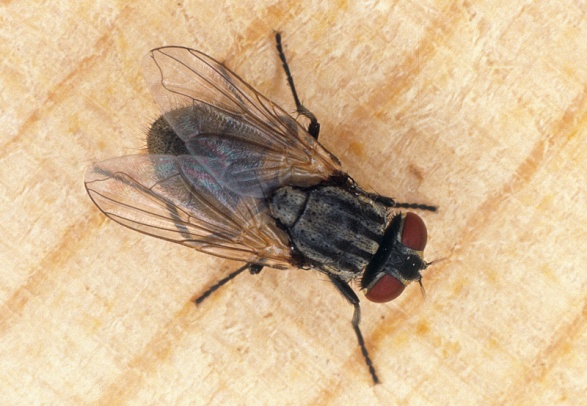
House fly
Musca domestica Linnaeus
(Insecta: Diptera: Muscidae)
Adult house flies are 6 to 7 mm long and have large, red eyes, sponging mouthparts, and transparent wings. The gray thorax bears four dark, longitudinal stripes. Eggs are white, banana shaped, and 1.2 mm long. The legless larvae (maggots) grow to be 7 to 12 mm long. They are cream colored and cylindrical with a tapered anterior and a blunt posterior end. Pupal cases are dark reddish brown, elongate oval, and 8 mm long.
During warm summer month, the life cycle is completed within seven to 10 days. Females lay several batches of 75 to150 eggs onto a nutrient-rich substrate such as animal manure. Larvae hatch within eight to 20 hours. Within the substrate, they feed and develop through three instars and pupate inside the last-instar cuticle (puparium) after four to seven days. Adults emerge after an additional two to three days.
Musca domestica has a worldwide distribution and is associated closely with humans and their activities.
Preferred breeding sites include livestock and poultry manure, human excrement, fermenting vegetables, and kitchen waste.
Images
To
save the Web-optimized images shown below to your hard drive:
PC users: right click to "Save Picture (or Image) As..."
Mac users: click and drag to your desktop.

Adult female house fly, Musca domestica Linnaeus
(Photographer: James Castner, University of Florida)
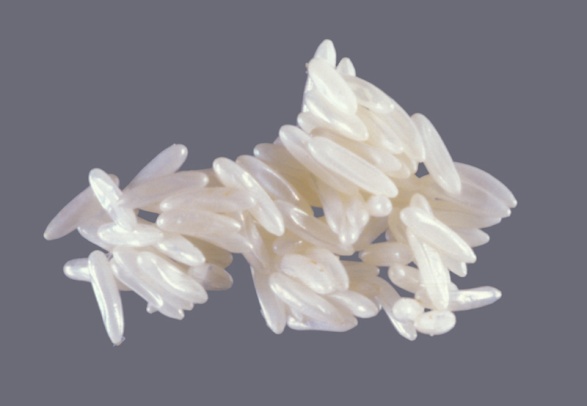
Eggs of house fly, Musca domestica Linnaeus
(Photographer: Lyle Buss, University of Florida)
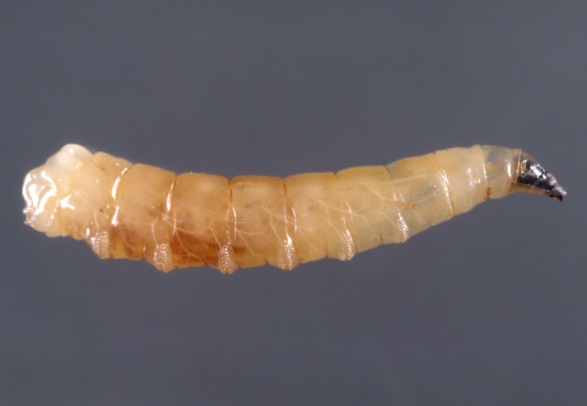
Third-instar larva (maggot) of house fly, Musca domestica Linnaeus
(Photographer: Lyle Buss, University of Florida)
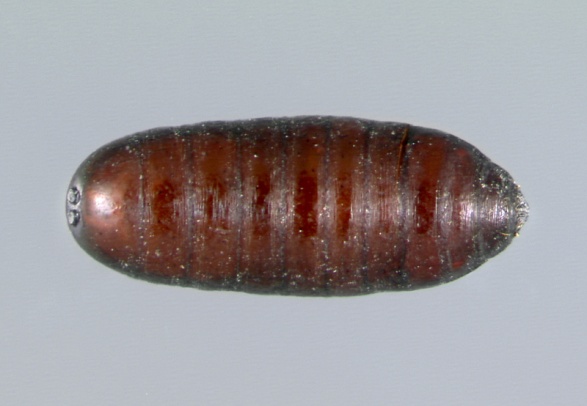
Puparium of house fly, Musca domestica Linnaeus
(Photographer: Lyle Buss, University of Florida)

All life stages of house fly, Musca domestica Linnaeus, illustrating the life cycle from eggs (top), larva (right), puparium (bottom), to adult (left)
(Photographer: Lyle Buss, University of Florida)
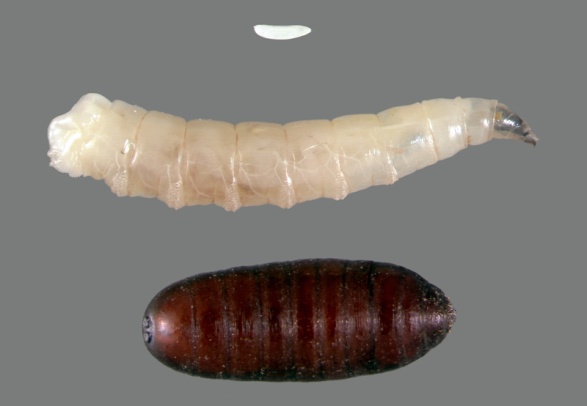
Egg (top), third-instar larva (middle), and puparium (bottom) of house fly, Musca domestica Linnaeus
(Photographer: Lyle Buss, University of Florida)